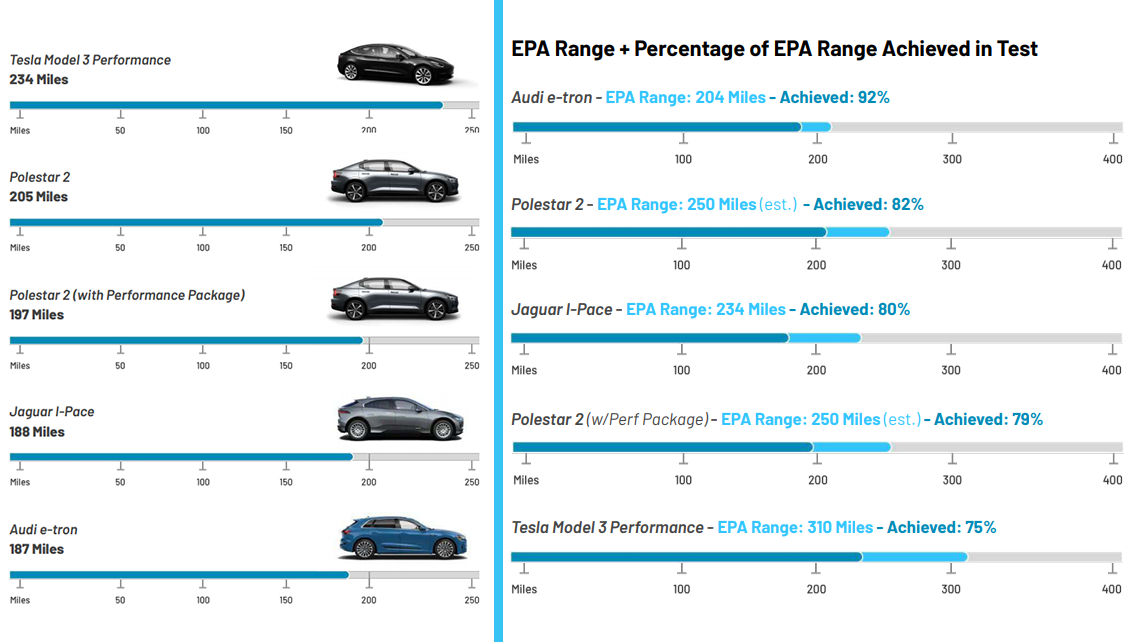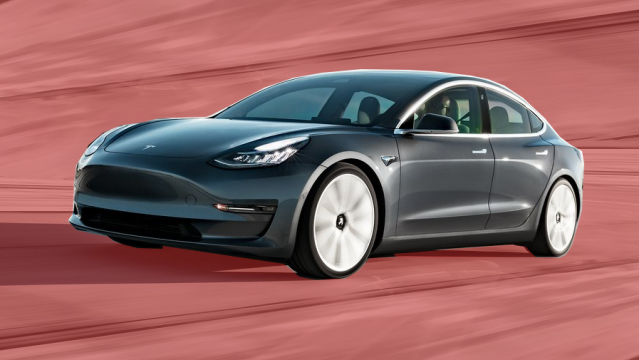Polestar is spinning up the campaign for its all-new fully electric compact sedan, the Polestar 2, and it has the Tesla Model 3 in its sights. An “independent firm” hired by Polestar to do a simulated highway test showed the Tesla was the least efficient of five vehicles tested.
Full disclosure: the news of this study is sourced from Polestar, the new electric car company partnered with Volvo under their mutual Geely ownership. The study was conducted by FT Tech, which claims to be an independent automotive research group in Michigan that can be hired for car testing like IIHS and NCAP standardisation, among other things.
In Polestar’s test, the goal was to examine the efficiency of five electric cars currently on sale in a “real-world” environment, to see how much of the car’s claimed range the vehicle could actually achieve at sustained highway speeds.

Here’s a breakdown of the testing parameters, via Roadshow:
On Thursday, Volvo Cars’ electric car division shared the results of an independent range study, which FT Techno conducted at its proving grounds in Fowlerville, Michigan. Aside from a standard Polestar 2 and one of the sedans equipped with the Performance Package, FT Techno invited a Jaguar I-Pace, Audi E-Tron and the aforementioned Model 3, specifically a Model 3 Performance.
While each car clocked its EPA-estimated combined rating fairly well, the study showed some of the cars don’t quite deliver as well at high speeds. In this case, 113 km/h around an oval track to mimic a road trip. With the climate control set to 72 degrees inside, and the sunnier skies creating an 85-degree outside temperature, each of the cars ran until their batteries depleted with regenerative braking off or toggled to the least-aggressive setting.
And here’s a result of the cars going around that oval at those speeds for that amount of time:
- Audi E-Tron – 92 per cent of claimed EPA range.
- Polestar 2 – 82 per cent of claimed automaker range.
- Jaguar I-Pace – 80 per cent of claimed EPA range.
- Polestar 2 Performance Pack – 79 per cent of claimed automaker range.
- Tesla Model 3 Performance – 75 per cent of claimed EPA range.
Again, these numbers only measure how much of the vehicle’s claimed range was actually achieved in highway conditions. Looking at the actual final distance travelled, the Tesla Model 3 still travelled the furthest, achieving 377 km total. The standard Polestar 2 achieved 330 km, the 2 with the performance package got 317 km, the Jaguar I-Pace 303 km, and the Audi E-Tron managed 301 km.

So while the Tesla may be the least efficient, it still can achieve the most range, at least driving in a circle at 113 km/h with the AC set to a comfortable 22 degrees Celsius.
The point being made here, at least by Polestar, is that its vehicle is potentially more energy-efficient, and you should buy a Polestar 2 instead of the Tesla Model 3 because of that. Just ignore the 45-plus extra kilometres you’ll get out of the Tesla overall.
